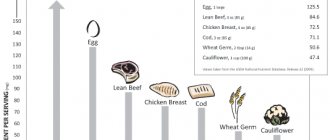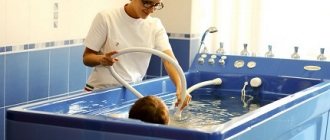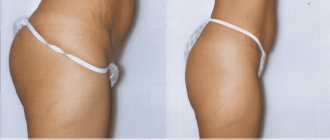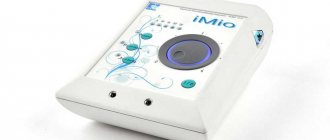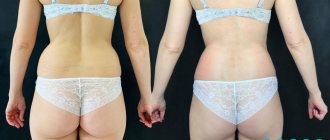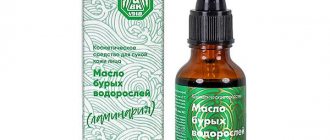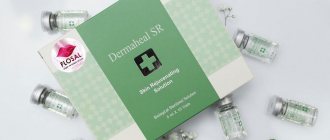Girls rarely pay attention to the content of chemical elements and vitamins in the internal microflora of the dermis, choosing care products at random. In fact, organic silicon plays an important role in mesotherapy, despite the fact that not everyone knows about it. Let's consider the main advantages of the substance and methods of its use.
What is mesotherapy?
What explains the popularity of mesotherapy? The essence of this method is to introduce therapeutic injections into the middle layer of the skin, which are a specially prepared cocktail of vitamins, minerals, extracts of medicinal plants, nucleic acids and amino acids. For injections, an ultra-thin needle is used, which allows the medicinal drug to be injected to a depth of 1.5-3.9 mm.
With this procedure, you can quickly and effectively solve both local and extensive skin problems. Mesotherapy helps improve blood microcirculation, increases the elasticity and turgor of the skin at the site of therapeutic injection.
The main advantage of mesotherapy over traditional methods of skin rejuvenation (creams, serums) is the penetration of healing cocktails into the middle layer of the skin - the dermis. Thanks to this, internal metabolic processes are activated, cell regeneration is stimulated, and blood circulation improves. This effect is very difficult to achieve when using external cosmetics.
Silicon for body rejuvenation
Since silicon is found in the skin throughout the body, increasing its content in the dermis can promote shape correction and weight loss in the treated area.
When using organic silicon as the main active ingredient in meso-cocktails, the following indications are prescribed for the procedure:
- Stretch marks.
- Flabbiness, dullness of the skin.
- Scars, scars.
- Fat deposits.
- Cellulite.
- Skin damage.
The substance helps fight any skin bumps, regardless of the cause of their occurrence. Because of this, it is so often used in the field of cosmetology.
However, do not confuse silicon-based formulations with fillers. They do not fill the relief from the inside, but only saturate the epithelial cells with a chemical element and contribute to the awakening of natural processes that slow down with age. Thanks to this, fatty tissue and excess intercellular fluid are converted into energy and removed from the girl’s body.
Facial mesotherapy: indications
The mesotherapy method is recommended for use in the following cases:
• in the presence of obvious signs of premature aging (photoaging);
• in case of sagging nasolabial folds and furrows near the mouth;
• with the appearance of deep wrinkles and darkening of the skin;
• when dark circles appear under the eyes;
• in case of formation of age spots;
• with a tendency to the appearance of freckles and spider veins;
• with closely located vessels;
• in the presence of scars of various origins: atrophic, hypertrophic, postoperative, keloid and post-acne.
The method of facial mesotherapy is widely used in the pre- and postoperative periods. It is often combined with other procedures - chemical peels, dermabrasion and laser resurfacing.
Clinical experience
Clinical experience in the use of germanium spans more than 40 years. The Japanese were the first to use germanium-organic compounds for medical purposes.
In 1967, Dr. Kazuhiko Asai synthesized the organic compound of germanium, known today as germanium-132 (Jap. Pat. 46-2964 (1971), J. Pat. 60-41472 (1985), J. Pat. 59-25677 (1984 )).
However, at the origins of this scientific and medical direction were Soviet scientists, in particular Corresponding Member of the USSR Academy of Sciences M.G. Voronkov and Professor V.F. Mironov, who in the late 1960s. in the USSR, for the first time in the world, he synthesized germanium-organic compounds, which subsequently formed the basis of the drug Germanium-132.[2] Unfortunately, the study of germanium-organic compounds did not receive further development in the USSR and this development ended up in Japan, whose specialists studied in detail and developed this promising direction.[3]
Dr Kazuhiko Asai proved that the new germanium compound is biologically active: it delays the development of certain malignant tumors, acts as an anesthetic, and to some extent protects against radioactive radiation.
The antitumor activity of germanium-132 was discovered in 1968 and subsequently confirmed many times.[4,5] Further numerous studies in different countries of the world showed a number of other activities (antiviral, interferon-inducing, adaptogenic, cardio- and hepatoprotective, antitoxic, analgesic, hypotensive, antianemic and others [6-9]). Thanks to its unique properties, germanium can also influence various biochemical processes, in particular, stimulate the saturation of tissues with oxygen, helps cleanse the body of poisons and toxins, accelerates wound healing, has a beneficial effect on blood composition, strengthens the immune system, etc.
However, it has been shown that the germanium-132 compound is prone to polymerization; its high-molecular compounds are poorly soluble in water.
In the 70s In the USA, another germanium-organic antitumor drug, spirogermanium, was developed and patented. However, its use has been associated with increased neurotoxicity and is currently not widely used.
In the mid-1980s, active work on the study of germanium organic compounds was started in South Korea by Dr. Tsang Uk Sohn. As a result of this activity, the drug Bio-germanium appeared. [10]
Thus, all studies conducted both by the developers-manufacturers themselves and by other researchers also show the high biological activity (antitumor, immunomodulatory, antitoxic, antiviral, etc.) of various organic germanium compounds and the possibility of their practical use in various therapeutic areas.
Main contraindications to skin mesotherapy
• poor blood clotting;
• taking anticoagulants, antiplatelet agents and other specific medications;
• inflammatory processes on the skin;
• chronic diseases and the presence of potentially dangerous infections in the body;
• weak immunity;
• pregnancy, lactation;
• renal pathologies (chronic renal failure, gestosis of the third trimester of pregnancy);
• fever, increased body temperature;
• serious cardiovascular diseases;
• gallstones;
• individual intolerance to the components of the drug.
The theory of one of the mechanisms of action of germanium in the human body
The high content of organic germanium in the blood allowed us to nominate Dr. Kazuhiko Asai the following theory. It is assumed that in the blood organic germanium behaves similarly to hemoglobin, which also carries a negative charge, and, like hemoglobin, is involved in the process of oxygen transfer in the tissues of the body. This prevents the development of hypoxia at the tissue level.
In the process of studying damaged tissues, it was found that they are always characterized by a lack of oxygen and the presence of positively charged hydrogen radicals H+. H+ ions have an extremely negative effect on the cells of the human body, even to the point of their death. Oxygen ions, having the ability to combine with hydrogen ions, make it possible to selectively and locally compensate for the damage to cells and tissues caused by hydrogen ions.
The normal functioning of all body systems must be guaranteed by the unhindered transport of oxygen in the tissues. Organic germanium has a pronounced ability to deliver oxygen to any point in the body and ensure its interaction with hydrogen ions. At the same time, organic compounds of germanium are non-toxic, do not give adverse reactions and function in the body for a long time, which allows us to consider them as extremely promising for medicine.
Types and techniques of mesotherapy
The use of one or another technique for administering a therapeutic cocktail depends on the type and severity of skin problems.
The manual (injection) technique involves manual injection of the product using a syringe and an ultra-thin needle. This procedure requires careful preparation and a responsible approach, because The effect will depend on the chosen technique and depth of injection. Methods for administering drugs are described in detail in the article “Mesotherapy for the body for cellulite.”
With the mechanical technique, the medication is administered using a gun (mesoinjector) with mesotherapy needles.
All mesotherapy methods differ in the methods of drug administration and indications for use; each has certain advantages and disadvantages. When choosing the appropriate option, the degree of pain is hardly worth taking into account; it is important to determine the desired effect of the procedure. The result directly depends on the client’s age, skin condition and certain characteristics of the body. The procedure should be carried out under the strict guidance of a professional cosmetologist interested in achieving the best result.
Unique germanium-organic complexes in Femegyl cosmetic products
As part of cosmetic products, germanium acts as an antihypoxant and a powerful antioxidant, accelerates regeneration processes, promotes the launch of defense mechanisms against external influences (i.e., increases the immune status of the body, exhibiting an antibacterial effect and bactericidal properties), and has a mild analgesic effect.
Femegyl cosmetics use unique germanium-organic complexes that increase the solubility and bioavailability of components, activate tissue respiration and have antioxidant properties.
Their presence distinguishes the FEMEGYL line from other manufacturers represented in this cosmetology segment.
Composition of cocktails for mesotherapy
Mesotherapy involves the introduction of one drug or a whole complex of useful substances under the skin. The following ingredients are widely used:
• hyaluronic acid, which stimulates the generation of collagen fibers and retains fluid. It is possible to administer both a single drug and complex injections;
• phospholipids, which are an integral component of membranes and increase the elasticity of skin cells;
• silicon and magnesium salts, which strengthen tissues and ensure their elasticity. They improve cell nutrition and improve skin tone;
• polylactic acid, which supports the natural process of neocollagen formation, which in turn stimulates collagen production.
Cocktails for mesotherapy can consist of vitamins of different groups, antioxidants, active enzymes, immunomodulators and even antibiotics. There are about 200 cocktail recipes, differing in different compositions and used in various cases, depending on the condition of the skin and cosmetic defects.
Introduction
Silicon is the second most abundant element on the planet after oxygen. In addition, it is the third most abundant micronutrient in the human body. It is present in water, plants and animals. It is assumed that silicon is important for the skin, because. ensures optimal collagen synthesis, participates in the activation of hydroxylation enzymes, increases the strength and elasticity of the skin. It has been shown that physiological concentrations of orthosilicic acid stimulate fibroblasts to secrete type 1 collagen.
A higher silicon content in hair makes it resistant to hair loss and improves its texture. Silicon also affects the condition of nails, as it is the predominant mineral in their composition. The desire to achieve these beneficial effects is causing an increase in interest and scientific research examining the effectiveness and safety of dietary supplements containing silicon, which help increase serum levels of this element, which improves the condition of the skin and its appendages. There are various forms of silicon supplements, differing in terms of its safety and bioavailability. In some countries, these additives are already widely used, although the bioavailability of silicon varies widely - from 1% to 50%, depending on the chemical form.
However, it should be noted that there is still no consensus among researchers that silicon is an essential element for humans or the actual benefits obtained from the use of silicon-containing supplements. Therefore, critical evaluation of published information regarding the efficacy, safety, and bioavailability of silicon used in dietary supplements is essential. This was the purpose of this study.
Skin aging process
The aging process occurs through two main mechanisms: internal and external. The aging process is inevitable and leads to atrophy, a reduction in the number of fibroblasts and thinning of blood vessels. Collagen fibers are particularly affected in this process, which is the result of the accumulation of irreversible degenerative changes associated with aging.
Extrinsic aging is mainly the result of damage caused by ultraviolet radiation. Other factors associated with this type of aging include smoking, pollution and poor nutrition. This causes degradation of collagen and elastin. Additionally, in addition to a decrease in silicon and hyaluronic acid in connective tissue, a decrease in the amount of extracellular matrix proteins and a decrease in the number of fibroblasts have been described.
Collagen and the fibers it produces are responsible for the biomechanical properties of the skin, which allows it to act as an organ of protection against external injury. These fibers represent a major component of the structural integrity of connective tissue, present in large quantities in the skin, bones and joints. It has been noted that after 21 years of age, the skin of people begins to lose up to 1% of collagen annually, which leads to a decrease in its thickness, turgor and the appearance of wrinkles. Skin aging accelerates significantly after menopause, during which in the first 5 years there is a loss of about 30% of skin collagen and an annual loss of 0.55% of elastin.
Collagen biosynthesis after the third or fourth decade of life remains at a low level and is insufficient to replenish collagen lost during age-related degradation. The decline in collagen after menopause is particularly correlated with age-related declines in bone mineral density. Degradation of collagen fibers plays a major role in the aging process of the skin. Based on this, it is advisable to use mechanisms affecting collagen biosynthesis as a potential tool for improving and preventing skin aging.
Silicon is a ubiquitous trace element
Given the abundance of silicon in the human body, it seems unlikely that deficiency occurs in both men and women. In 1972, two studies by two different research groups showed that silicon is an essential element in chickens and mice. These experiments showed that a deficiency in silicon nutrients leads to skeletal deformation, incl. skull and long tubular bones, as well as damage to cartilaginous zones. Thus, the important role of silicon in bone mineralization was demonstrated.
Since then, several studies have shown that higher concentrations of this element in the blood had a beneficial effect on patients with osteoporosis, atherosclerosis, aging skin and brittle hair and nails, indicating the involvement of silicon in various mechanisms. However, there is no conclusive evidence to determine whether silicon is an essential nutrient for humans and higher animals, since its deficiency has not resulted in cell cycle arrest in mammals and its functional role remains unclear.
Most of the silicon present in the blood is excreted by the kidneys. This route of elimination is the main one, because Silicon levels in the blood correlate with levels in the urine. For this reason, the bioavailability of silicon and its derivatives is assessed in various studies by its concentration in serum or urine. In water, food products of plant, especially grain crops, and animal origin, silicon is found in high concentrations in the form of silicon oxide and silicate. The main sources of silicon in the diet of residents of the Western Hemisphere are cereals (30%), followed by fruits, drinks and foods of plant origin. Together, these products provide about 75% of all silicon consumed by humans. However, there are studies indicating low bioavailability of silicon from some foods due to the low solubility of some silicon-containing compounds, especially those that polymerize.
Thus, despite the presence of significant amounts of silicon in some foods, sometimes it is in them in insoluble form and cannot be absorbed from the gastrointestinal tract. Silicon present in food dissolves in the acidic environment of the stomach, transforming into orthosilicic acid or Si (OH), which is optimal for subsequent absorption. The literature describes the connection between the aging process and an increase in gastric pH, which leads to a decrease in the absorption of silicon contained in food products in a bioavailable form.
Orthosilicic acid is the main, most accessible form of silicon for humans, obtained from drinking water and other liquids, including beer. It is stable when diluted (<10 -4 M), but polymerizes at pH close to neutral. Absorption studies have shown that only orthosilicic acid is available, while its polymerized forms are not absorbed.
Questions regarding the bioavailability of silicon from mineral water are given in the literature. In a study of rats supplemented with orthosilicic acid in water, there were no significant differences in bone silicon concentrations relative to baseline. In beer, about 80% of the total silicon is contained in the form of orthosilicic acid. However, there is debate about the instability of orthosilicic acid in beer during industrial processes, for example, during bottling.
At high concentrations, orthosilicic acid must be stabilized to avoid excessive polymerization, which reduces its bioavailability. For this reason, attempts are being made to concentrate and stabilize orthosilicic acid in silicon supplements using various methods in order to increase its bioavailability.
Food additives containing silicon
There is a worldwide consumption of various types of silicon-containing supplements. As an example, in France the common organic silicon is usually monomethyl silanetriol (MmSt), while in Germany colloidal silicon is common and in Belgium choline-stabilized orthosilicic acid (CH-OSA) is more common. Monomethyl silanetriol (MmSt) is not only organic, but also monomeric and therefore more bioavailable, while other silicates show varying degrees of polymerization, which interfered with silicon uptake to varying degrees in rats and in some preliminary human studies.
Some studies have shown that monomethyl silanetriol is easily absorbed from the gastrointestinal tract after digestion without side effects. However, specific studies have not been conducted to evaluate its safety.
Jugdaohsingh et al, in 2013, conducted a study to evaluate the safety of the liquid organosilicon dietary supplement Monomethylsilanetriol (MMST) with the chemical formula CH3-Si-(OH)3, which has high bioavailability. A group of 22 menstruating healthy women received dietary supplement for 4 weeks at the maximum recommended dose of silicon 10.5 mg/day. The authors concluded that consumption of MMST is safe, being completely converted in the gastrointestinal tract after ingestion to orthosilicic acid, which is easily absorbed.
However, in response to the published article, Vanden Berghe questioned some aspects of the study, arguing that laboratory studies with toxicology testing in animals and longer durations in humans are needed to prove the supplement's safety. MMST has been used as a source of silicon for a long time around the world, especially in Europe. However, the European Food Safety Authority (EFSA) considers that there is not enough evidence to justify the use of MMST as a silicon additive.
The largest number of studies in the literature evaluate choline-stabilized orthosilicic acid (CH-OSA). CH-OSA has been approved for human consumption as the non-toxic and most bioavailable form of silicon. From a chemical point of view, CH-OSA is a mixture of orthosilicic acid and choline chloride. Given the lack of data on adverse reactions to silicon, a recommended dose has not been established. According to the US regulatory authority, choline, silicon oxides and various silicates are classified as substances "generally recognized as safe".
Choline stabilization is considered the most advanced technology for stabilizing orthosilicic acid. Choline has important characteristics that make it an ideal orthosilicic acid stabilizer .
In high concentrations, choline prevents extensive polymerization and aggregation of silicon particles and maintains it in the form of an aqueous suspension.
Additionally, as mentioned earlier, the presence of choline in the compound may have a synergistic effect with orthosilicic acid .
Choline is a precursor to phospholipids, which are important for the formation of cell membranes, and is also involved in cell signaling, lipid metabolism, and protection against homocysteine-mediated collagen breakdown.
Based on various studies conducted in animals and humans, the European Food Safety Authority (EFSA) has concluded that the silicon present in choline-stabilized orthosilicic acid is bioavailable and its use in supplements at the suggested doses does not pose a safety risk. provided that the maximum choline level is not exceeded (3.5 g/day). Studies have been conducted on both animals and humans. Supplementation with choline-stabilized orthosilicic acid in calves for 23 weeks increased serum silica levels by 4.9%.
Another study by Vanden Berghe assessed silicon bioavailability in 21 pigs that were supplemented with choline-stabilized orthosilicic acid during pregnancy (16 weeks) and lactation (four weeks). In the offspring of pigs receiving a silicon supplement, its concentration in the blood serum was 150% higher than in the offspring of the control group. The authors attribute this result to the bioavailability of silicon in the choline-stabilized orthosilicic acid supplement, as well as the ability of maternal transfer of absorbed silicon. Silicon absorption from a choline-stabilized orthosilicic acid supplement was assessed in a study of 14 healthy volunteers aged 22-34 years. Each volunteer received oral doses of various silicon supplements.
A significant increase in serum silicon concentration compared to baseline was observed with choline-stabilized orthosilicic acid supplementation. This study showed that the bioavailability of silicon is highly dependent on the chemical form of the compound.
Another study conducted to study the in vivo absorption of silicon from different sources by measuring its levels in blood and urine found varying levels of absorption. It was noted that a diet rich in silicon did not lead to a sufficient increase in the level of this element in urine and serum, compared with the period in which the subjects were on a normal diet. Based on this study, the authors concluded that silicon absorption is highly dependent on its chemical form and matrix.
Sripanyakorn et al measured silicon uptake from 8 different sources. The results confirmed that the degree of silicon polymerization is inversely proportional to intestinal absorption.
Silicon and its effect on skin, hair and nails
Regarding the skin, it is believed that silicon is important for optimal collagen synthesis and for the activation of hydroxylation of enzymes important in the formation of collagen fibers, increasing the strength and elasticity of the skin.
Silicon is also associated with the synthesis of glycosaminoglycans.
In terms of hair, it is assumed that hair with a higher silicon content tends to have less tendency to fall out and an improved texture. Nails also depend on the presence of silicon, since this element is one of the predominant minerals in their composition. The presence of soft and brittle nails may indicate a systemic silicon deficiency. Improving the quality of nails contributes to their resistance to infections.
A study of 50 healthy volunteers aged 40 to 65 years with clear clinical signs of facial photoaging assessed the effects on skin, hair and nails of supplementation containing choline-stabilized orthosilicic acid. The supplement was taken daily for 20 weeks, 2 capsules containing 10 mg of choline-stabilized orthosilicic acid .
Considering the serum concentrations of the various components, consumption of choline-stabilized orthosilicic acid at these doses was found to be safe. An improvement in the microrelief of the facial skin, its elasticity, and a decrease in the fragility of nails and hair were noted.
Another randomized study of 48 volunteers with thinning, hair loss-prone hair examined the effects of choline-stabilized orthosilicic acid on hair. In the group receiving 10 mg of choline-stabilized orthosilicic acid daily for 9 months, there was an improvement in the morphological and mechanical properties of hair, the hair became thicker, and its appearance improved, while no changes were found in the placebo group.
The fact that choline-stabilized orthosilicic acid increases hair resistance to breakage suggests that it may have a structural effect on hair fibers. According to the authors, interaction with keratin is possible, given that orthosilicic acid is a chemical form of silicon, common in physiological fluids and capable of forming complexes with amino acids and peptides.
Conclusion
An analysis of the scientific literature on the use of supplements containing silicon shows the great therapeutic potential of this element, which can improve human health and aesthetics. Analysis of research shows that among the various chemical forms available, orthosilicic acid is the form with high bioavailability. Other forms have absorption inversely proportional to their degree of polymerization.
Choline-stabilized orthosilicic acid (CH-OSA) as a silicon-containing dietary supplement is the most widely reported form in the literature, indicating greater scientific support for its use. However, there are few studies evaluating the safety, efficacy, and bioavailability of other chemical forms of silicon that use proper design, large numbers of volunteers, and long follow-up periods.
Mesotherapy: before and after photos
The effect of mesotherapy
The result of mesotherapy is noted after 2-3 procedures, and the lifting effect is usually noticeable immediately after the first procedure. The complexion improves, deep wrinkles decrease and superficial wrinkles disappear, dark circles and puffiness under the eyes disappear, pigment spots lighten and vascular network disappears, the skin becomes moisturized and healthy in appearance. In addition, you can carry out mesotherapy for hair and body; the features of their implementation are described on our website (Read the articles: Mesotherapy for hair, Mesotherapy for weight loss).
